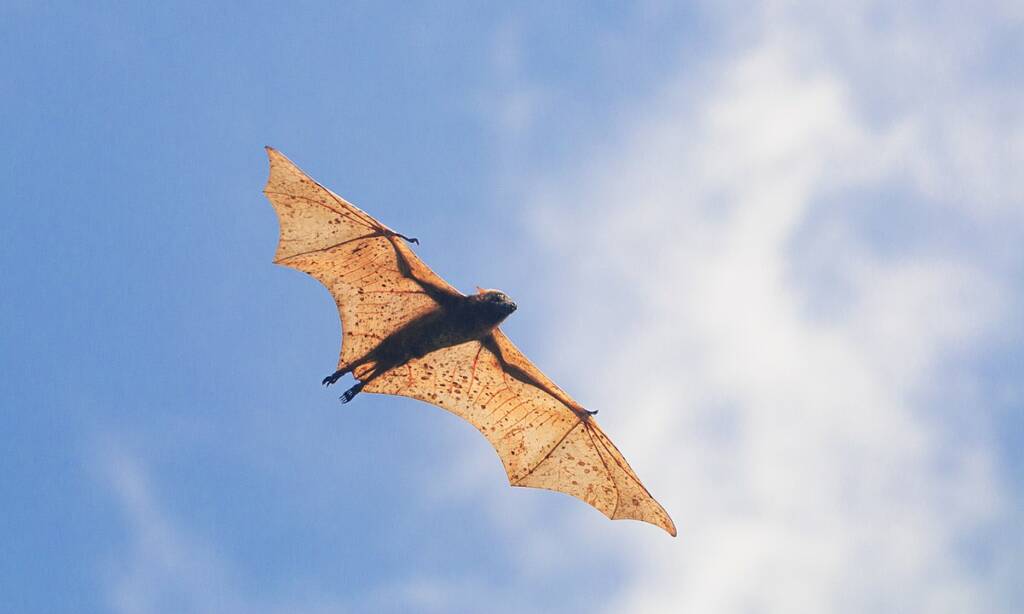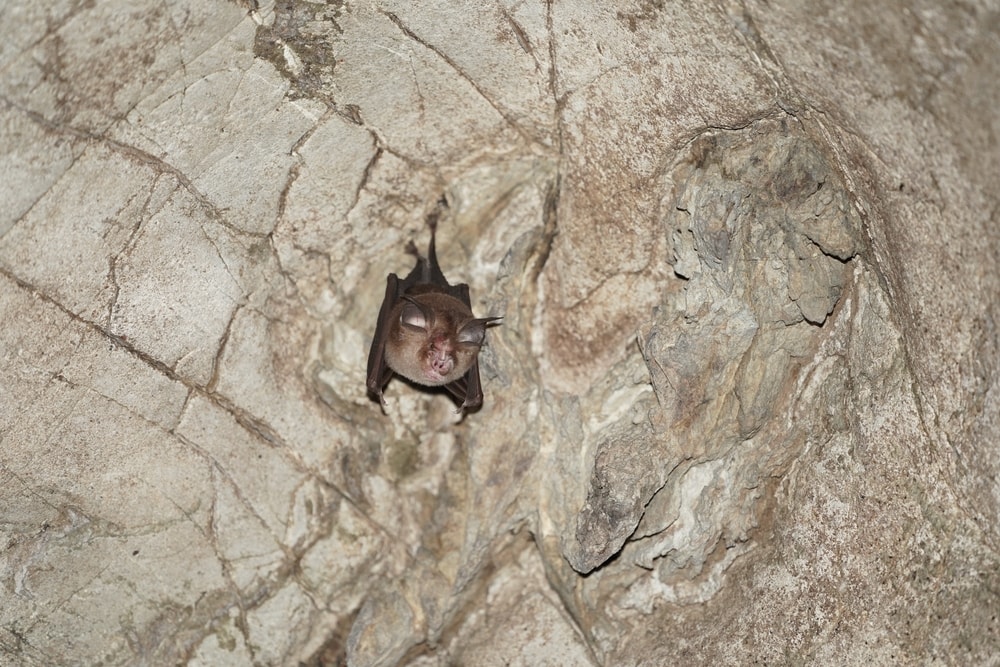Outforia Quicktake: Key Takeaways
- Bats are mammals belonging to the Mammalia class, not birds, as they have fur and differently structured wings.
- Bats are the only mammals capable of true flight, using echolocation to navigate.
- They give birth to live pups and feed them milk produced by their bodies.
- Bats are warm-blooded, breathe air, and have highly-developed lungs for their flying capabilities.
- Bats play essential roles in their ecosystems, such as pollinating flowers and dispersing seeds.
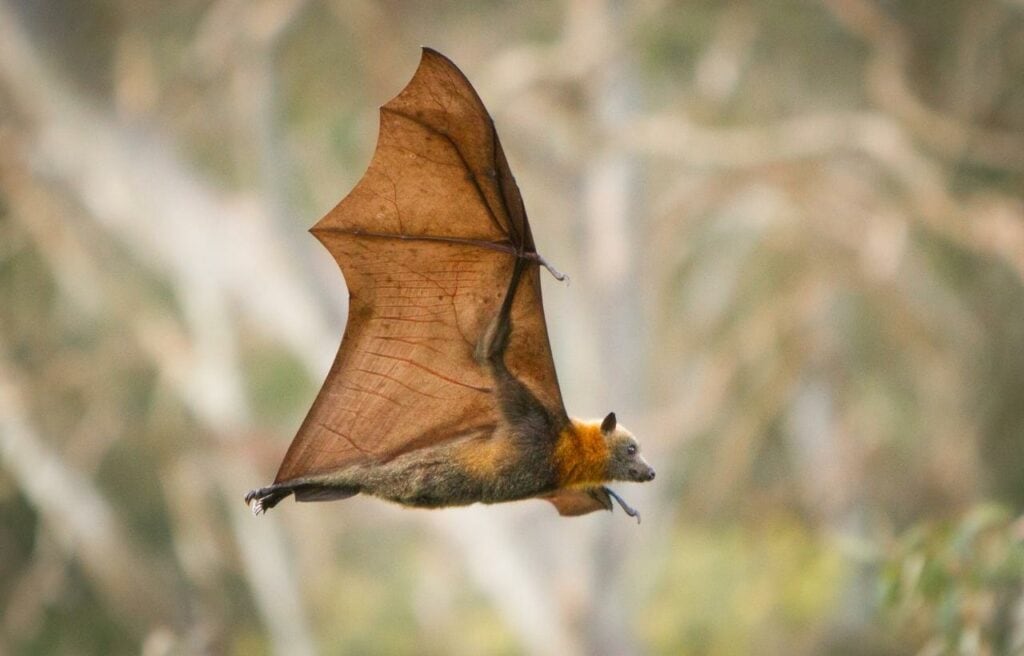
Bats have always been fascinating animals. There are many myths and amazing legends about these creatures of the night. You probably know about Count Dracula, who transforms into a bat to travel at night. However, real-life bats are even more interesting than fantasy ones.
Are bats mammals? The short answer is yes. They have all the characteristics necessary to be considered a mammal. They are the only mammals capable of true flight. Let’s find out more about these creatures of the night.
Are Bats Birds?
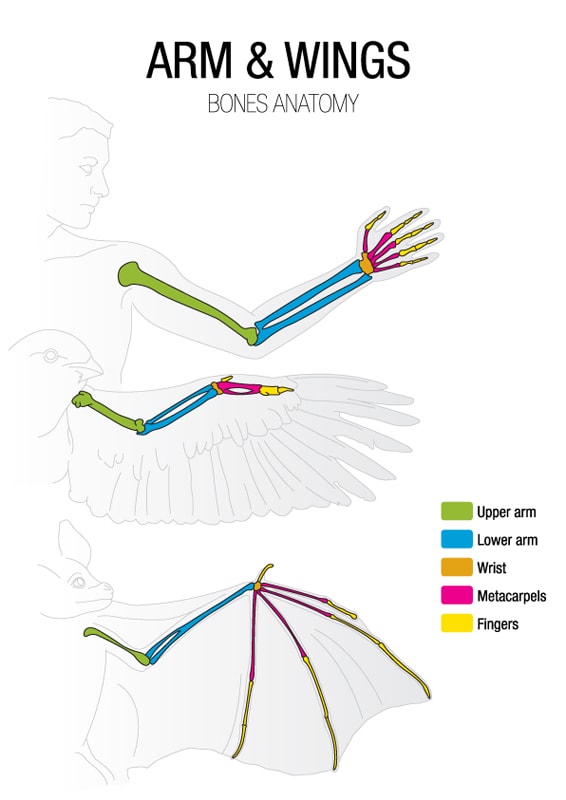
Some people think bats are birds which is an understandable thought. More so since it’s hard to distinguish one from another during those late nights. However, despite having wings and being able to fly, bats are not birds but belong to a completely different class.
Bat wings do not have feathers, which is an essential criterion to be classified as a bird. Bats have fur, not feathers, and are built differently to fly.
Bats are mammals belonging to the Mammalia class, while birds are vertebrates belonging to the class Aves. Bats’ wings are highly-flexible membranes that stretch between their long fingers. Unlike bats, birds have rigid, feathered wings that flap completely when they fly.
There are more differences between bats and birds. Birds will lay eggs and need to hunt to bring food to their hatchlings. Bats give birth to live pups and feed them milk produced by their bodies.
Birds are equipped with beaks with no teeth and usually swallow their food whole. Bats have mouths with teeth, and they chew their food.
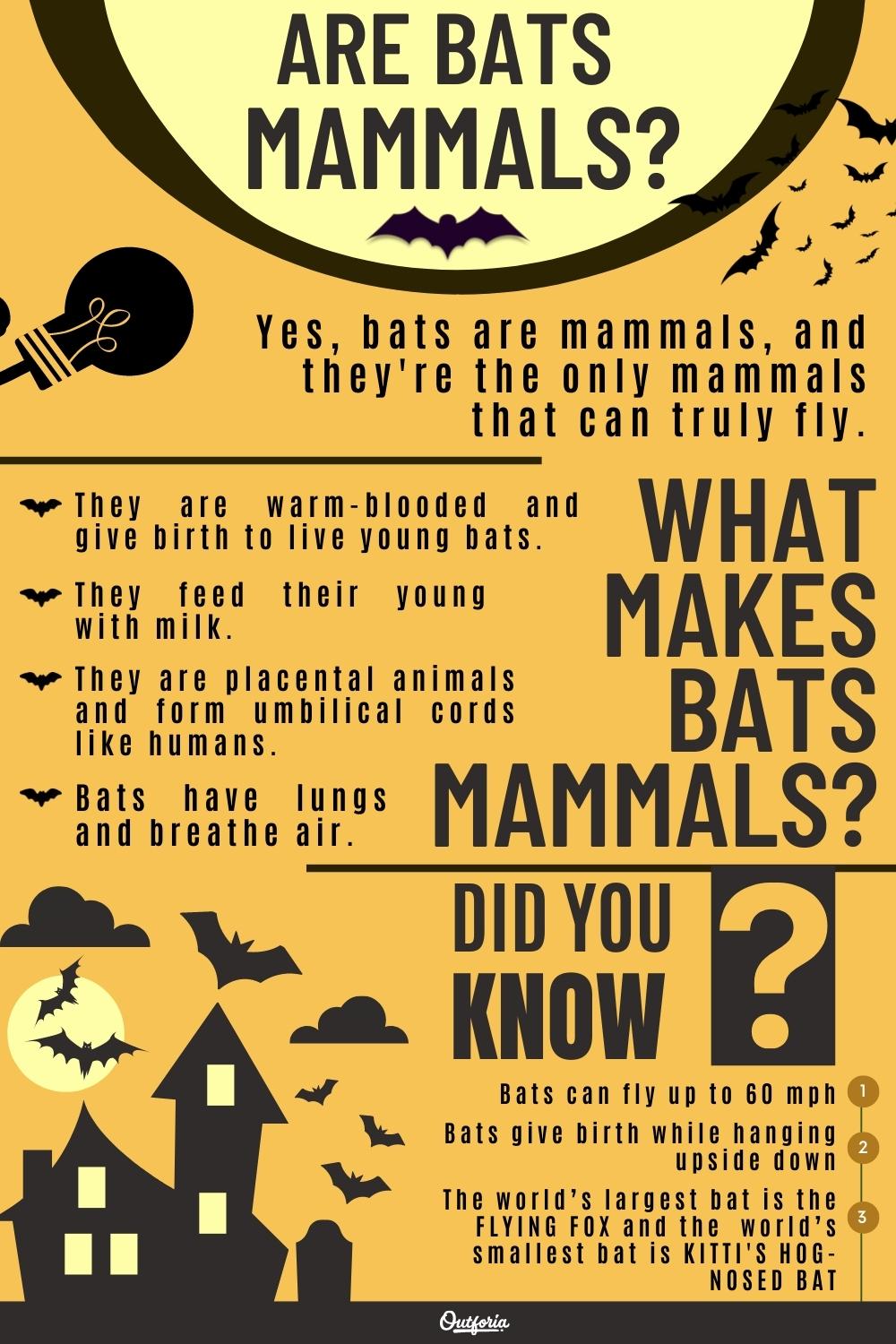
SHARE THIS IMAGE ON YOUR SITE
<a href="https://outforia.com/are-bats-mammals/"><img style="width:100%;" src="https://outforia.com/wp-content/uploads/2022/10/ARE-BATS-MAMMALS-INFORGRAPHICS-1-683x1024.jpg"></a><br> are bats mammals <a href="https://outforia.com">Outforia</a>Are Bats Mammals?
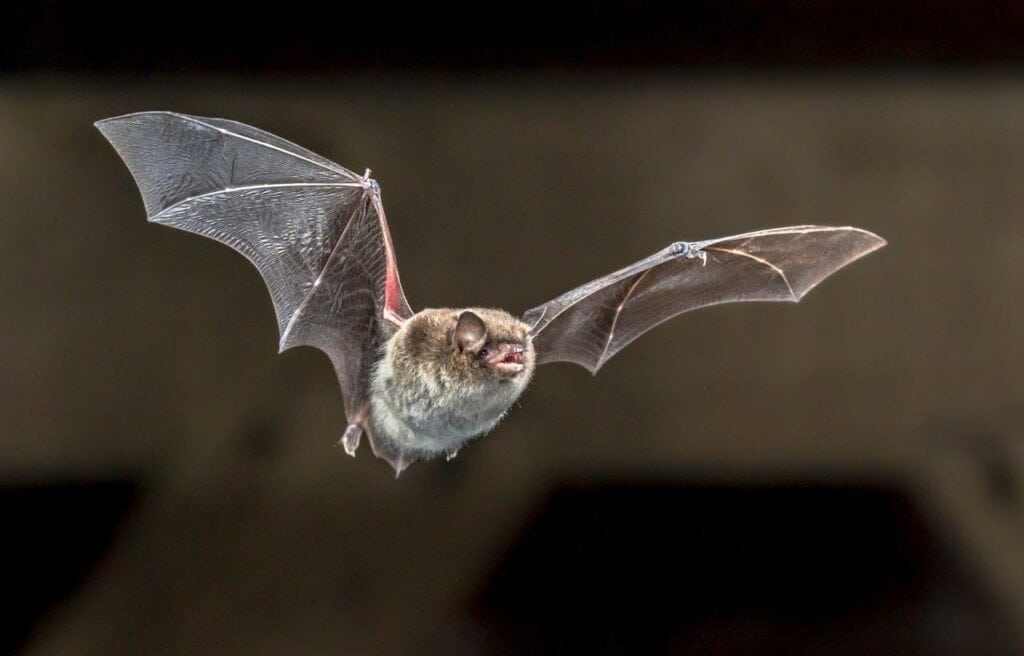
Yes, bats are mammals. Whenever we think of flying animals, we think of birds. While bats are flying animals, they are not grouped with birds but mammals.
What’s more interesting about them is the way they fly. They use echolocation to know where they are going.
Bats live all over the world, except for the Arctic circle. Without bats, many tropical plants would not exist. It is because bats are essential for pollinating flowers and dispersing seeds.
You may also like: 28 Types Of Bats: The Cutest Bat Species (Names, Photos, And More)
Why Are Bats Mammals?
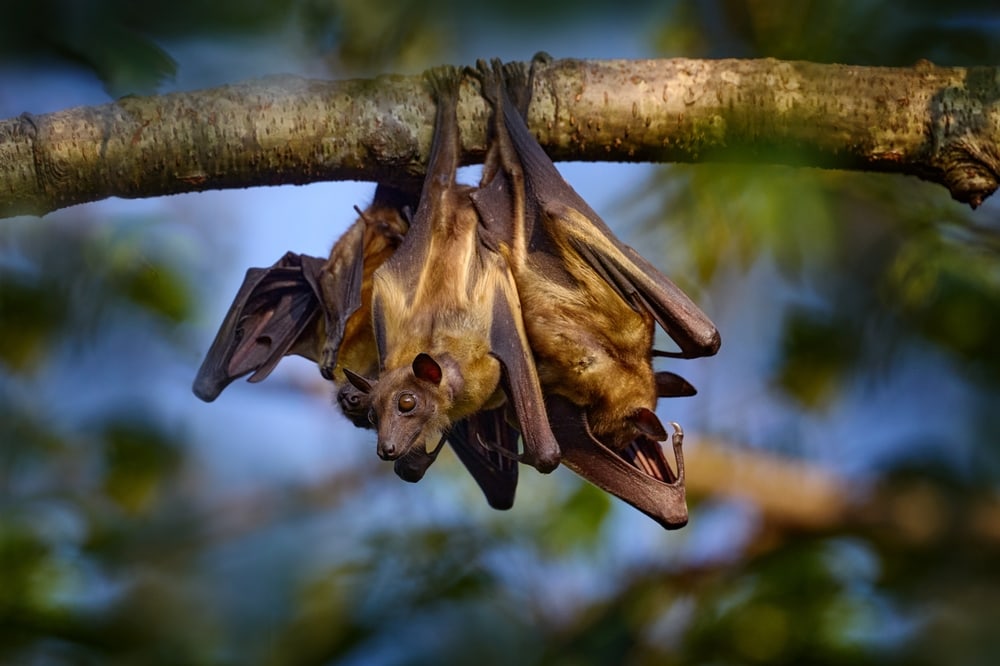
The oldest bat fossil is dated 52 million years ago. Nowadays, bats are one of the most prolific groups of mammals, with over 1,400 species. They are surpassed only by rodents.
Bats belong to the Chiroptera order of the Mammalia family, and out of 1,400 species, 40 live in North America.
In addition to not laying eggs, Chiroptera gives birth to live young after an extended gestation period, making them members of the eutherian family.
What is a mammal?
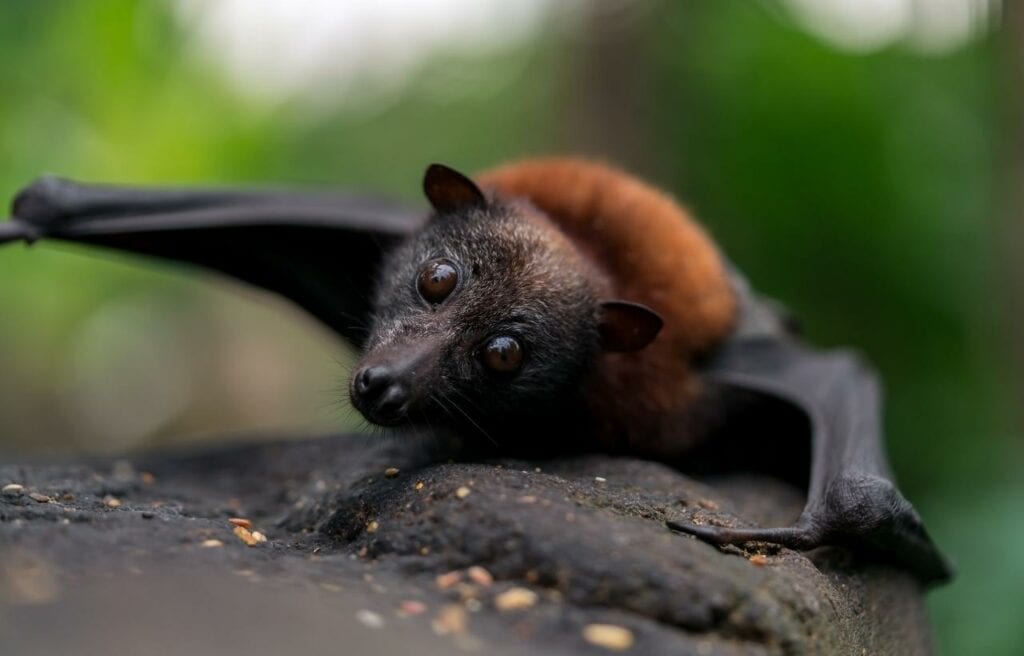
Mammals are warm-blooded animals with fur that feed their young with milk.
Additionally, they have lungs, so they breathe air. Well known examples of mammals are dogs, cats, and tigers. In addition, some marine animals, such as dolphins, whales, and dugongs qualify as mammals.
The order of Mammalia includes all animals that have mammary glands. This order also includes:
- Monotremes – This group consists of the echidna and the platypus. They are warm-blooded mammals that lay eggs and nurture their young.
- Marsupials – This group includes kangaroos. They give birth to partially developed babies, which must stay in their mother’s pouches until they grow.
- Placental mammals – This includes bats, humans, and elephants. The gestation period varies from species to species, but they all give birth to live babies.
Reproduction
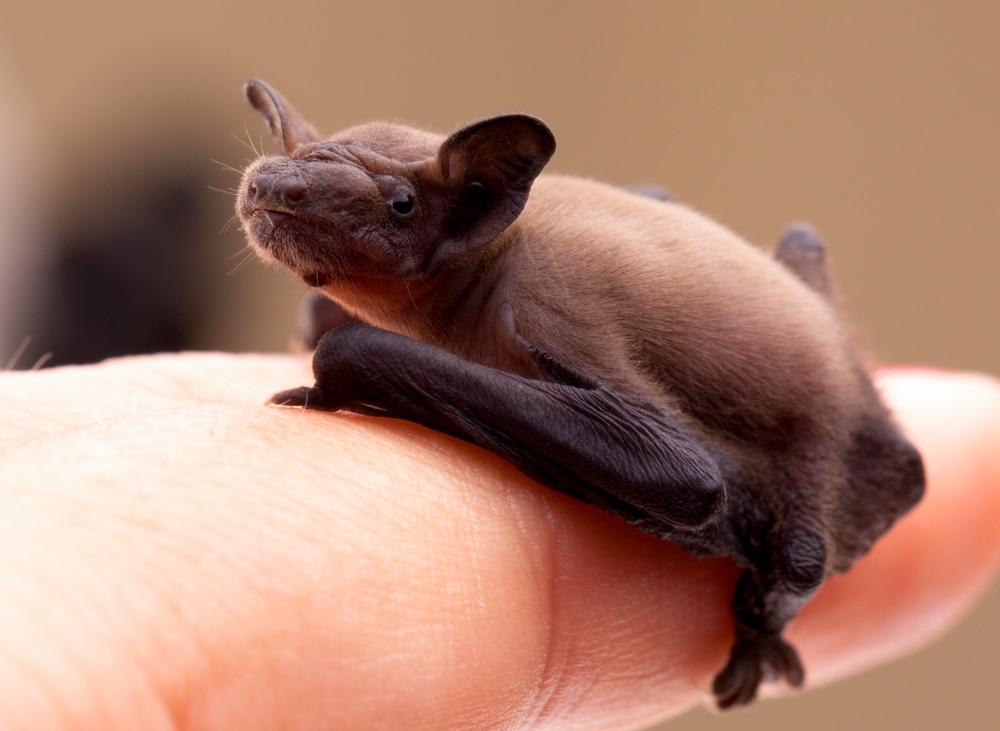
The gestation period usually lasts approximately three months for most bat species.
They are placental mammals, and like humans, an umbilical cord is formed between the mother and the baby. The umbilical cord provides the baby with the essential nutrients to develop properly.
The mothers will hang upside down when they are ready to give birth. The newborns are immediately caught and placed inside the mother’s pouch. Most bat species give birth to one baby.
Female bats help each other give birth, raising their young in maternity colonies. In about 18 days, the young bat learns to fly. Then, at five weeks, they can fly independently.
Warm-blooded
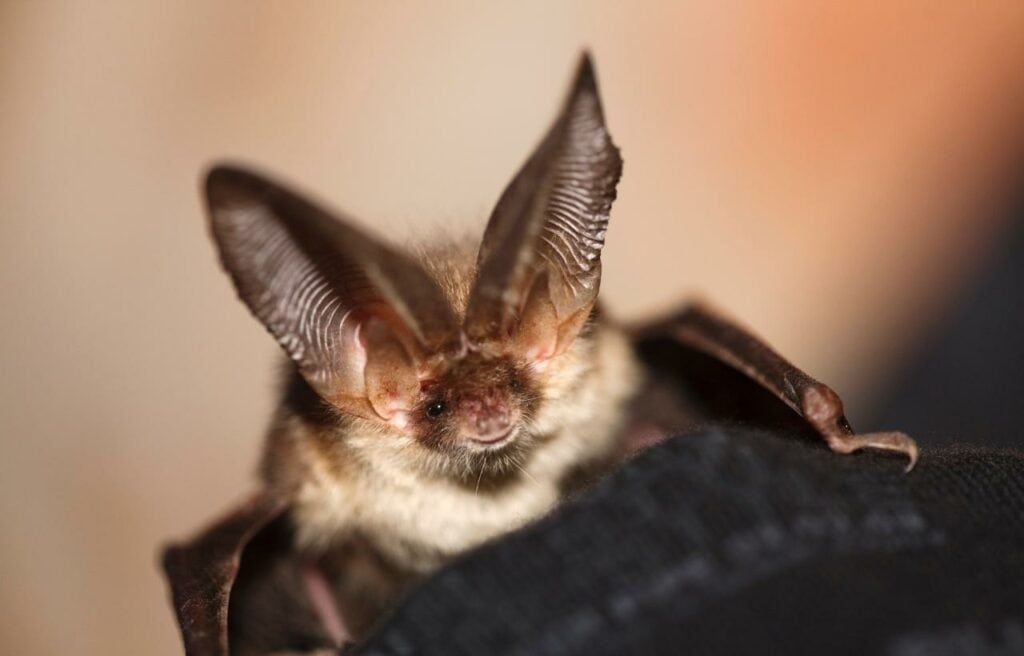
Another reason why bats belong to the mammalian group is their warm-blooded nature. By converting food into energy, bats keep their bodies warm. These nocturnal creatures can drop their body temperature to conserve energy.
Torpor occurs when a creature’s temperature drops and its metabolism slows down. When food is scarce, animals can survive by going into torpor. Bats can slow their heart rate to ten beats per minute.
Breath air
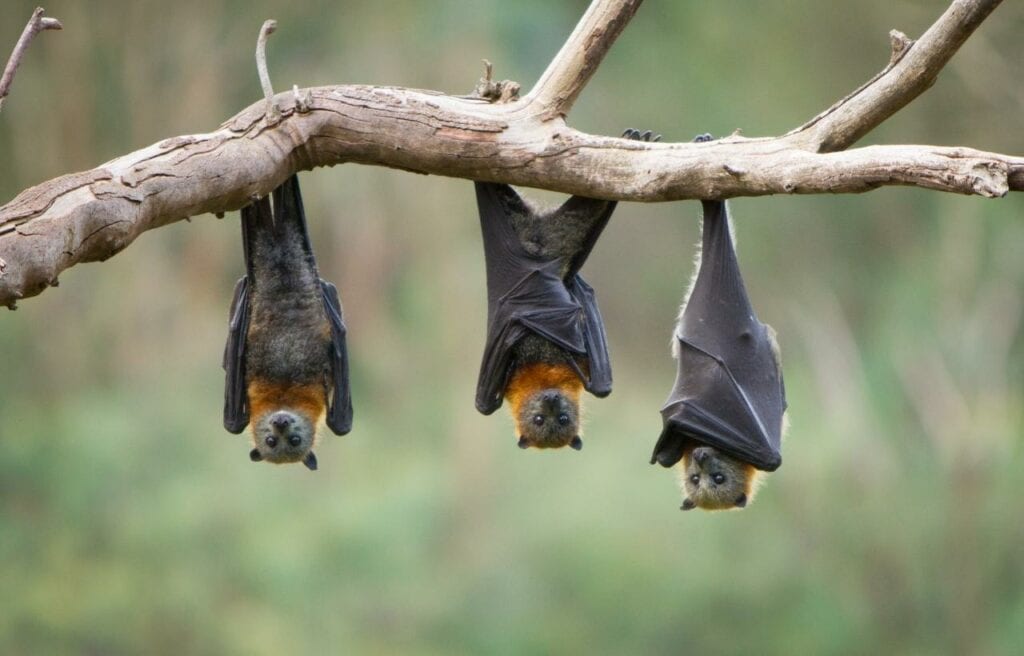
All mammals have lungs and breathe oxygen to exist. Bats are mammals because they use their lungs to inhale oxygen and expel carbon dioxide.
Some species of bats have two nostrils, like the baleen bats. Toothed bats have only one nostril for breathing.
Bats can only breathe through their nostrils because the mouth is not connected to the trachea. It is one of their adaptations for underwater hunting and eating. This way, it eliminates the risk of the airway opening when eating.
They have more highly-developed lungs than most mammals. They use up to 60% of their lung capacity with just one breath.
These mammals can produce myoglobin, a protein that helps them fly. It facilitates oxygen transfer from the blood to the muscle. It is beneficial for sustained flight.
Are Bats the Only Flying Mammal?
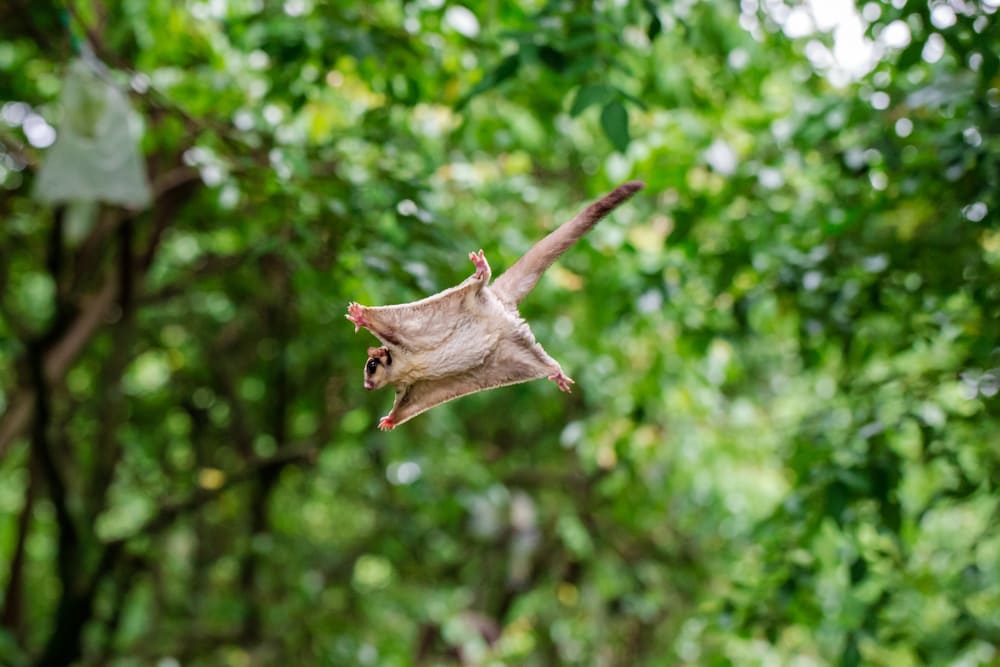
Yes, bats are the only mammals capable of flying. Other mammals with wings don’t truly fly; they just glide from tree to tree.
Rainforest animals developed gliding because the trees are tall and widely spread. The best known gliders are flying squirrels and flying lemurs.
Flying squirrels can glide over 660 feet (200 m) when they wish to get to a faraway tree. To glide, they extend their cartilage spur on their elbow, which opens up the flap of their furry skin called the patagium.
As a result, they look like a spread-eagle when gliding. The flying squirrels use their tails as a parachute, and when they need to land, they insert their claws into the tree.
Flying lemurs, or colugos, are the most adapted mammal for gliding. They have a large patagium and can glide up to 230 feet ( 70 m) without losing too much height. In addition, the Mayan Colungo can start gliding without jumping.
You may also like: 225 Types Of Owls: Pictures, Facts And More
Do Bats Have Nipples?
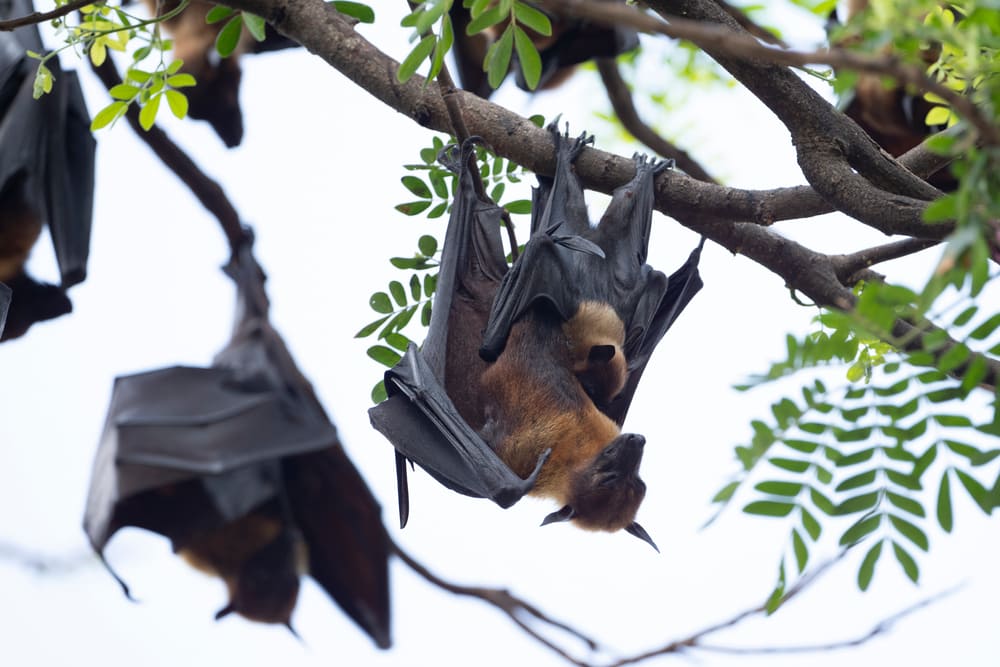
Yes, bats have nipples. Usually, a female bat has two nipples situated 0.1 inches (4 mm) from the armpit. However, the female eastern red bat has four nipples because they usually have three pups in one litter.
Lactating female bats have more prominent nipples because the young are sucking from them. Conversely, females who never gave birth or stopped lactating have smaller, less prominent nipples.
When a female bat is pregnant or lactating, the nipples become more prominent and often change color, becoming darker. When the baby bat is suckling, the area around the nipple is hairless.
Bat Milk
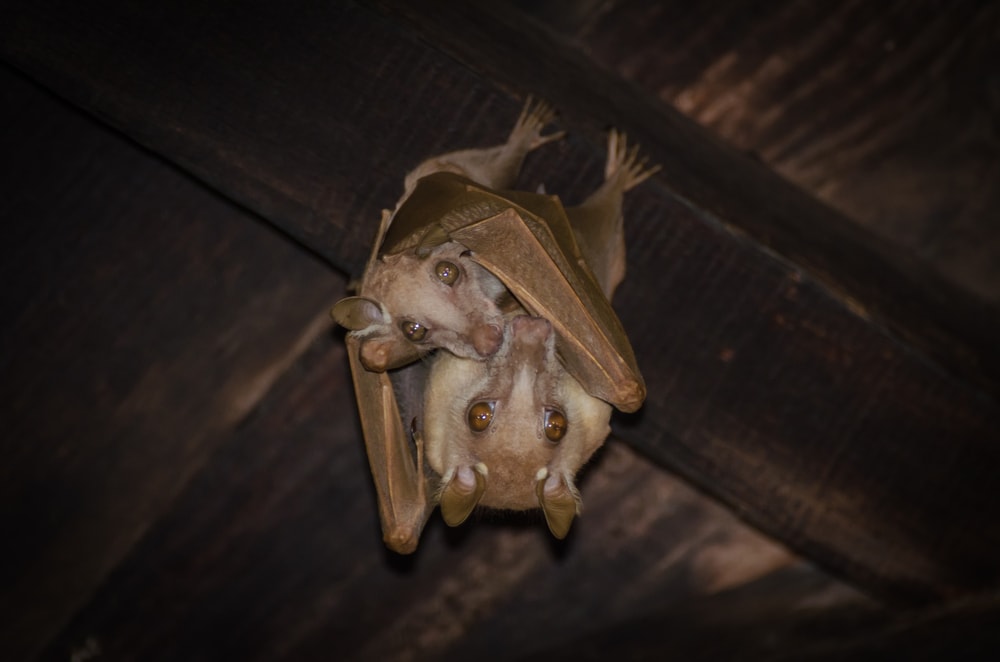
A distinctive feature of mammals is their mammary glands, which only exist in the order of Mammalia. Mammary glands are exocrine glands that produce milk for pups. As we know, female bats can have two to four nipples that make milk.
Depending on the bat’s diet, their milk can contain 10 to 15% fat, which is fattier than a human’s or cow’s milk. Usually, young bats will suck their mother’s milk until they are six weeks old and begin catching insects.
A study revealed that male Dayak fruit bats produce small amounts of milk in their mammary glands.
In addition, the male’s nipples are noticeably enlarged beneath his wings. However, there is no evidence that they use their milk to feed the pups or that lactating happens because of their diet.
You may also like: Nocturnal Animals List: What Stays Awake At Night?
Fun Facts about Bats
👉🏼 Bats can fly as fast as 60 miles (96 km) per hour. The Mexican free-tailed bat can reach approximately 100 (160 km) miles per hour. Now, that is an extraordinarily fast bat!
👉🏼 Most bats in the United States are on the decline. Their most common threat is the white-nose syndrome. It is a white fungus that infects hibernating bats’ noses, wings, and ears.
👉🏼 Bats are essential for their ecosystem. Their droppings, called guano, are one of the best fertilizers. The largest bat colony in the USA is in the Bracken Bat Cave in Texas.
👉🏼The world’s largest bat is the flying fox. Their wingspan reaches 5 feet (1.5 m). Their head and body length is 16 inches (40 cm).
👉🏼 The world’s smallest bat is Kitti’s hog-nosed bat. It is also the smallest mammal in length, measuring almost 1.3 inches (33 mm).
Bat FAQs
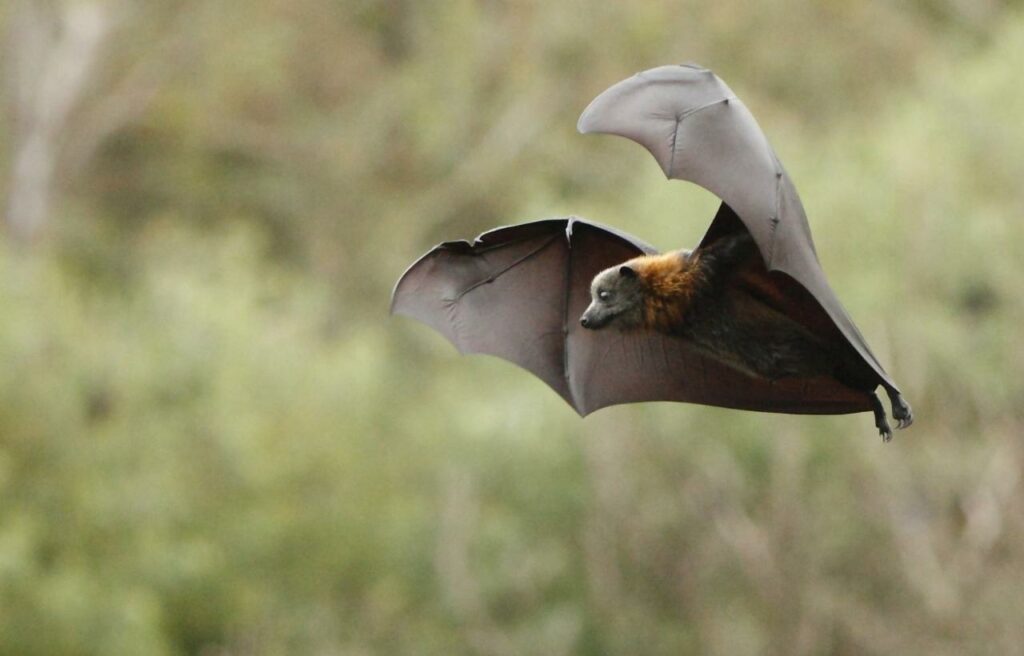
Do bats lay eggs?
Bats don’t lay eggs. All mammals give birth to live pups which are nursed with milk. There are rare exceptions, like the echidna, which lays eggs.
Do bats give birth through the mouth?
Bats do not give birth through the mouth. Bat reproduction is similar to humans. However, they give birth hanging upside down.
Is a bird a mammal?
Birds are not mammals. Mammals belong to the Mammalia class, while birds belong to the Aves class.
Do bats have teeth?
Bats have tiny teeth. They usually have between 20 to 38 teeth that they use to grind insects.



